In our quest to safeguard crops from black thrips, understanding their life cycle is key. These tiny pests wreak havoc in agriculture, but with smart management strategies, we can control their impact. From identifying their stages – egg, larval, pupal, to adult – to adopting effective control measures, this guide explores how to mitigate their damage. Join us as we delve into both traditional and innovative methods to keep these destructive insects at bay and protect our valuable crops.
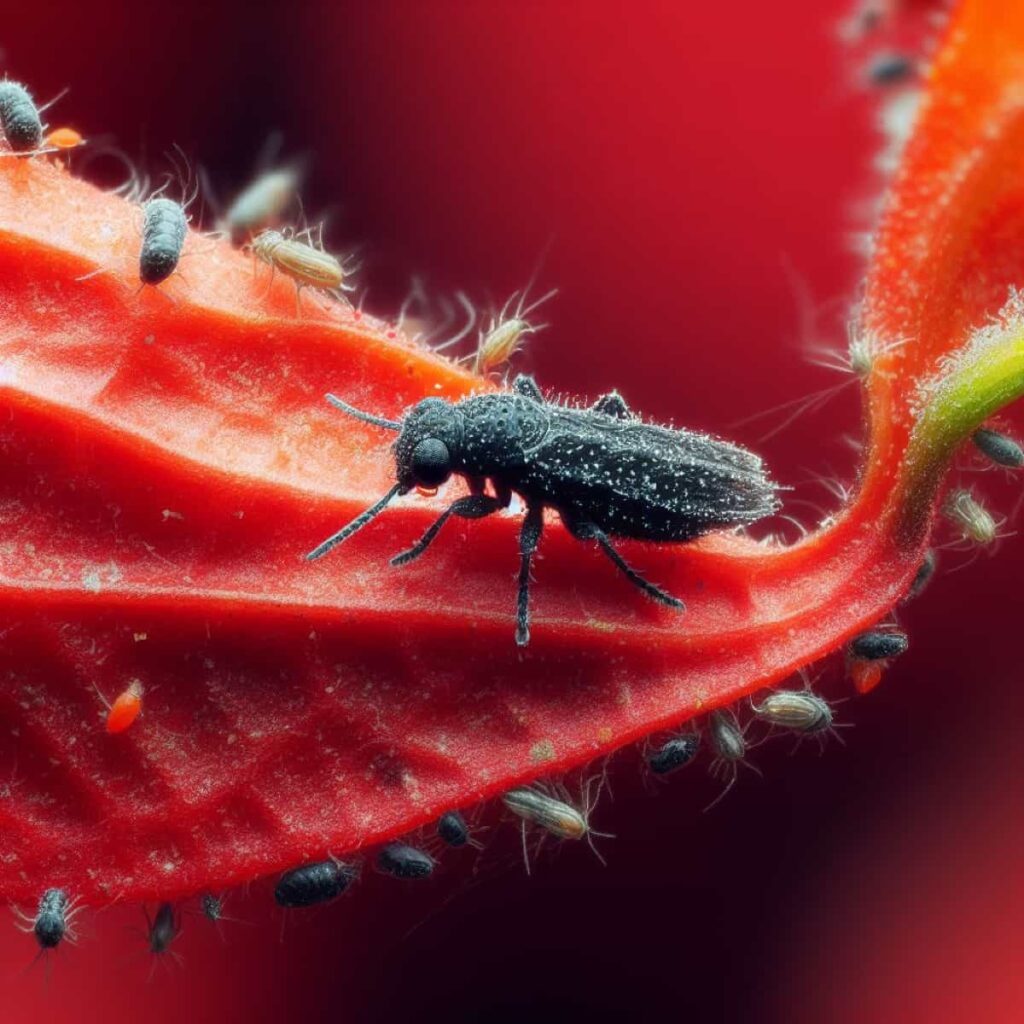
Controlling Black Thrips Life Cycle
Introduction to Black Thrips Life Cycle
Black thrips, or chili thrips, are tiny insects that belong to the family Thripidae. They are native to South and Southeast Asia but have spread to other parts of the world, including Africa, North and South America, and Australia. They are brownish-black in color and about 1-2 mm in length. They feed on the leaves and fruits of chili plants, causing leaf curling, stunted growth, and reduced yield. They also transmit viruses that can cause further damage to the plants.
The life cycle of black thrips consists of egg, nymphal, pre-pupal, pupal, and adult stages. Adult females insert eggs in plant tissue, which hatch in 6-8 days. The larvae pass through two stages, consuming enough food to complete development to the adult stage. The pre-pupal and pupal stages occur in the soil, leaf litter at the base of the plant. Adults emerge after two days of pupation and begin feeding and reproducing. The life cycle can be completed in 15-20 days, depend on the temperature host plant.
Egg Stage of Black Thrips
The egg stage of black thrips lasts for 6-8 days. Females use their saw-like ovipositor to insert eggs into young leaves, buds, or fruits of chili plants. The eggs are white, oval, and about 0.2 mm long. Each female lay up to 50 eggs in her lifetime.
Larval Stage of Black Thrips
The larval stage of black thrips lasts for 4-5 days. The larvae are reddish at first, then turn yellowish-brown as they mature. They have no wings and are about 0.5-1 mm long. They feed on the plant sap by piercing the epidermis with their mouthparts. They cause damage by sucking out the cell contents, leaving behind silvery-white scars on the leaves and fruits. They produce excrete honeydew, which attracts ants and promotes fungal growth.
Pupal Stage of Black Thrips
The pupal stage of black thrips lasts for 2-3 days. The pupae are white or yellowish and have short wing pads. They do not feed and are inactive. They drop from the plant and pupate in the soil or leaf litter at the base of the plant.
In case you missed it: Management Strategies for Black Thrips in Horticultural Crops
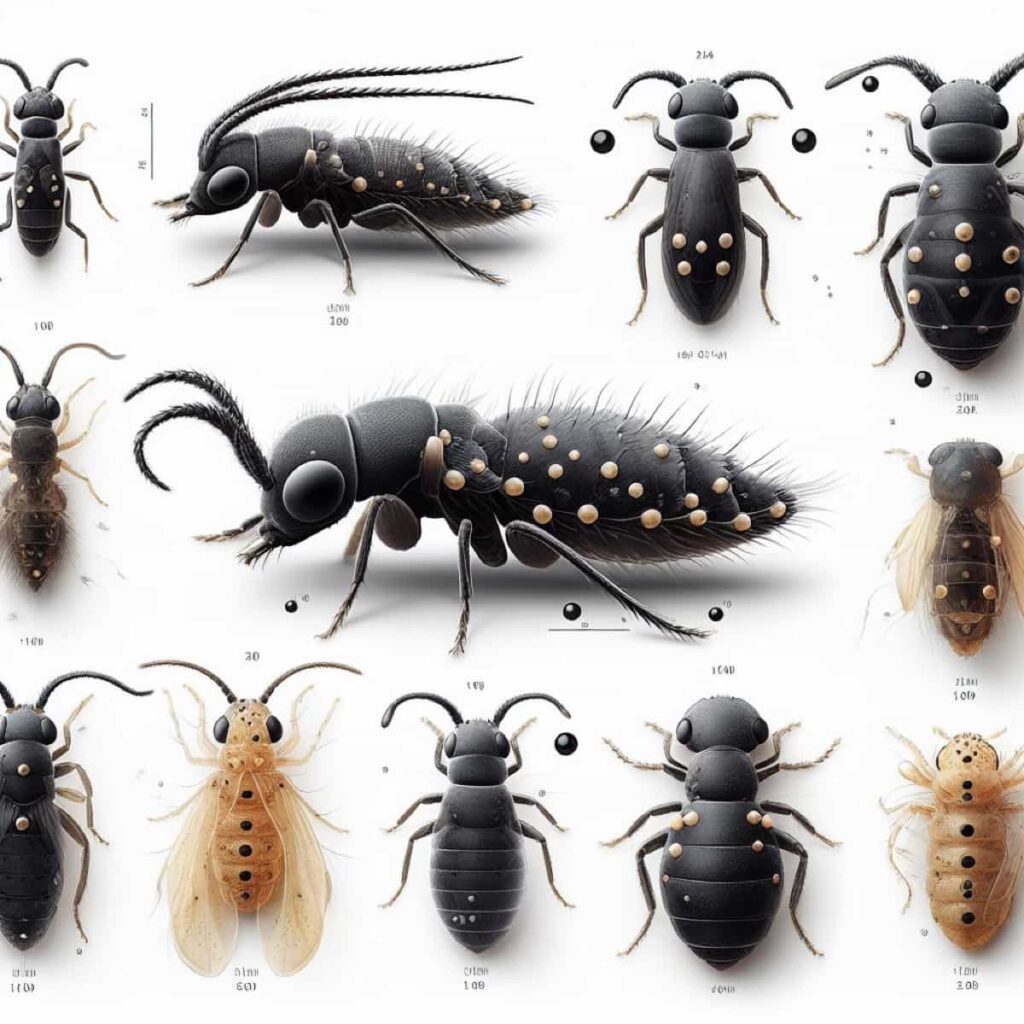
Adult Stage of Black Thrips
The adult stage of black thrips lasts for 30-45 days for females and 15-30 days for males. The adults are brownish-black and have fringed wings. They are about 1-2 mm long. They feed on the same plant parts as the larvae, causing similar damage symptoms. They also transmit viruses such as tomato spotted wilt virus (TSWV) and groundnut bud necrosis virus (GBNV) to chili plants.
Feeding Behavior of Black Thrips
Black thrips feed on the plant sap by piercing the epidermis with their mouthparts. They prefer young leaves, buds, and fruits of chili plants. They cause damage by sucking out the cell contents, leaving behind silvery-white scars on the leaves and fruits. These scars reduce the photosynthetic capacity and aesthetic value of the plant. They also produce excrete honeydew, which attracts ants and promotes fungal growth.
Reproduction and Fecundity of Black Thrips
Black thrips reproduce sexually by mating between males and females. Females store enough sperm from a single mating to fertilize eggs for their entire life. Each female can lay 50 eggs in her lifetime, depending on the availability of food and host plants.
Environmental Factors Affecting Black Thrips Life Cycle
Black thrip’s life cycle is influenced by environmental factors such as temperature, humidity, rainfall, and host plant availability. Temperature is the most important factor that affects their development, survival, reproduction, and dispersal.
- Temperature: Black thrips can survive in a different of temperatures from 10°C to 42°C, but they prefer warm and dry conditions for optimal growth and reproduction. Their development rate increases with increasing temperature until it reaches a threshold of about 35°C, after which it declines sharply.
- Humidity: Black thrips prefer low humidity levels for feeding and oviposition. High humidity levels reduce their feeding activity and egg hatchability.
- Rainfall: Rainfall can reduce the black thrips population by washing them off the plants or drowning them in waterlogged soil.
- Host Plant Availability: Black thrips can feed on a wide range of host plants from different families, but they prefer solanaceous crops such as chili peppers, tomatoes, eggplants, potatoes, etc. Host plant quality affects their development rate, survival rate, fecundity rate, and damage potential.
In case you missed it: Maximizing Profitability through Precision Livestock Management for Cattle Farms
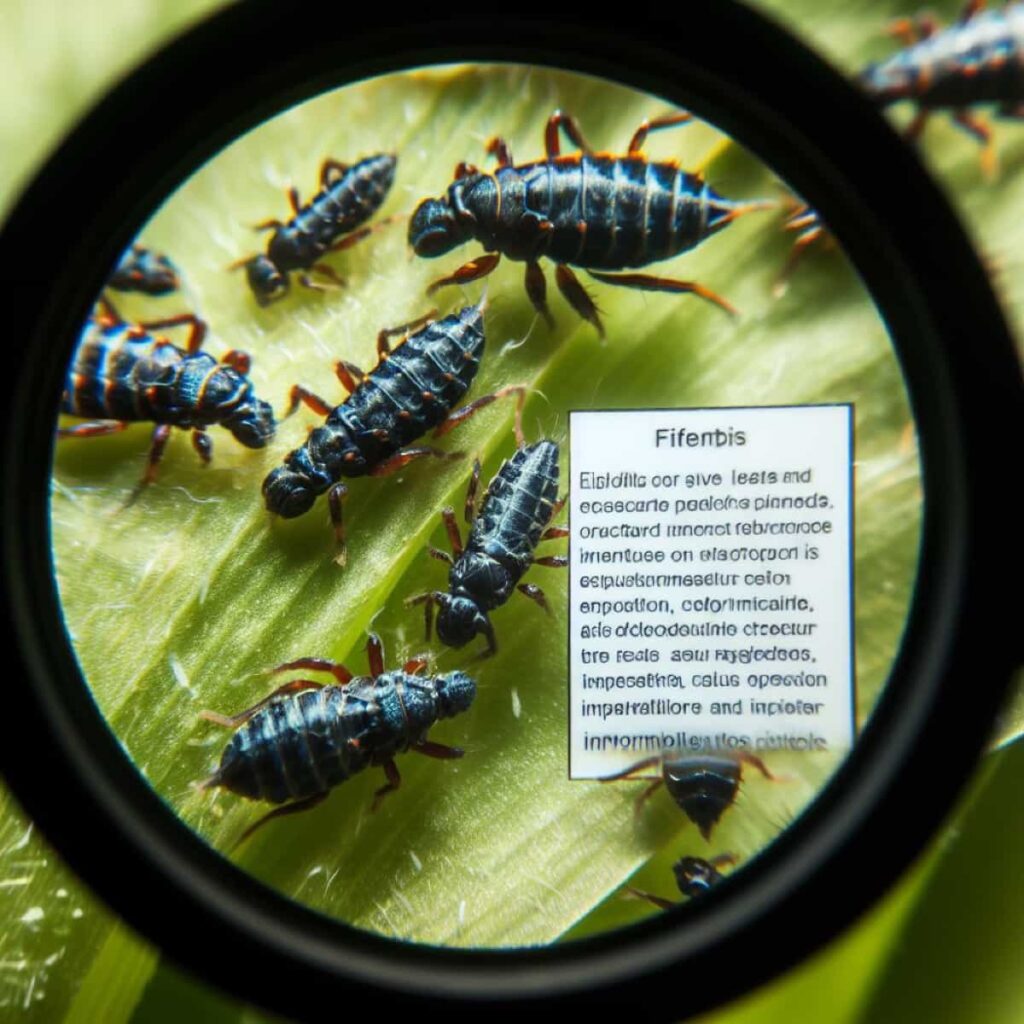
Symptoms of Black Thrips in Major Crops
- Leaf Damage: Infested leaves show elongation of petioles, crinkling, and a distinct silvery appearance, often curling upwards.
- Flower and Bud Impact: Flower petals develop brownish streaks due to adult scraping, and buds may become brittle and fall off.
- Growth Impacts: Early-stage infestations can stunt chili plant growth and affect flower production, leading to reduced yields. Fruits that do form often need to be better developed.
Preventive Measures to Control Black Thrips
- Intercropping: Growing crops like agathi, maize, or sorghum provides shade and discourages thrips growth.
- Border Crops: Planting rows of sorghum or maize can act as a barrier to thrips migration from adjacent fields.
- Trap Crops: Marigolds planted in chili fields can attract thrips away from the main crop.
- Watering Techniques: Lightly sprinkling water on seedlings can deter thrips multiplication.
- Sticky Traps: Blue, yellow, and white sticky traps at crop height are effective for mass trapping.
- Organic Sprays: Neem oil (10000 ppm) at 2 ml per liter of water disrupts thrip eggs and acts as an antifeedant.
Chemical Control for Black Thrips
- Keefun Insecticide: Contains 15% EC of Tolfenpyrad. It stops thrips from feeding upon contact. Dosage: 1.5-2 ml per liter of water.
- Delegate Insecticide: Contains Spinetoram 11.7% SC. It’s effective in lower doses and has a long-term effect. Dosage: 0.9 ml per liter of water.
- Gracia Insecticide: Contains Fluxametamide 10% EC. It is safe for beneficial insects. Dosage: 1 ml per liter or 160 ml per acre.
- Exponus Insecticide: Contains Broflanilide 300 g/l SC. Effective against thrips. Dosage: 34 ml per acre.
- EM 1 Insecticide: Contains Emamectin Benzoate 5% SG. Exhibits contact and stomach poison action. Dosage: 0.4 gm per liter or 80 gm per acre.
Impact of Black Thrips on Agriculture and Horticulture
Black thrips are a major pest of chili peppers and other solanaceous crops. They cause direct damage by feeding on the leaves and fruits, resulting in leaf curling, stunted growth, reduced yield, and poor quality. They also cause indirect damage by transmitting viruses such as tomato spotted wilt virus and groundnut bud necrosis virus (GBNV) to chili plants. These viruses cause symptoms such as wilting, necrosis, mosaic, ringspots, and distortion of leaves and fruits.
In case you missed it: How to Get Rid of Ants in Potted Plants: 10 Effective Ways to Control with Natural and Homemade DIY Pesticides
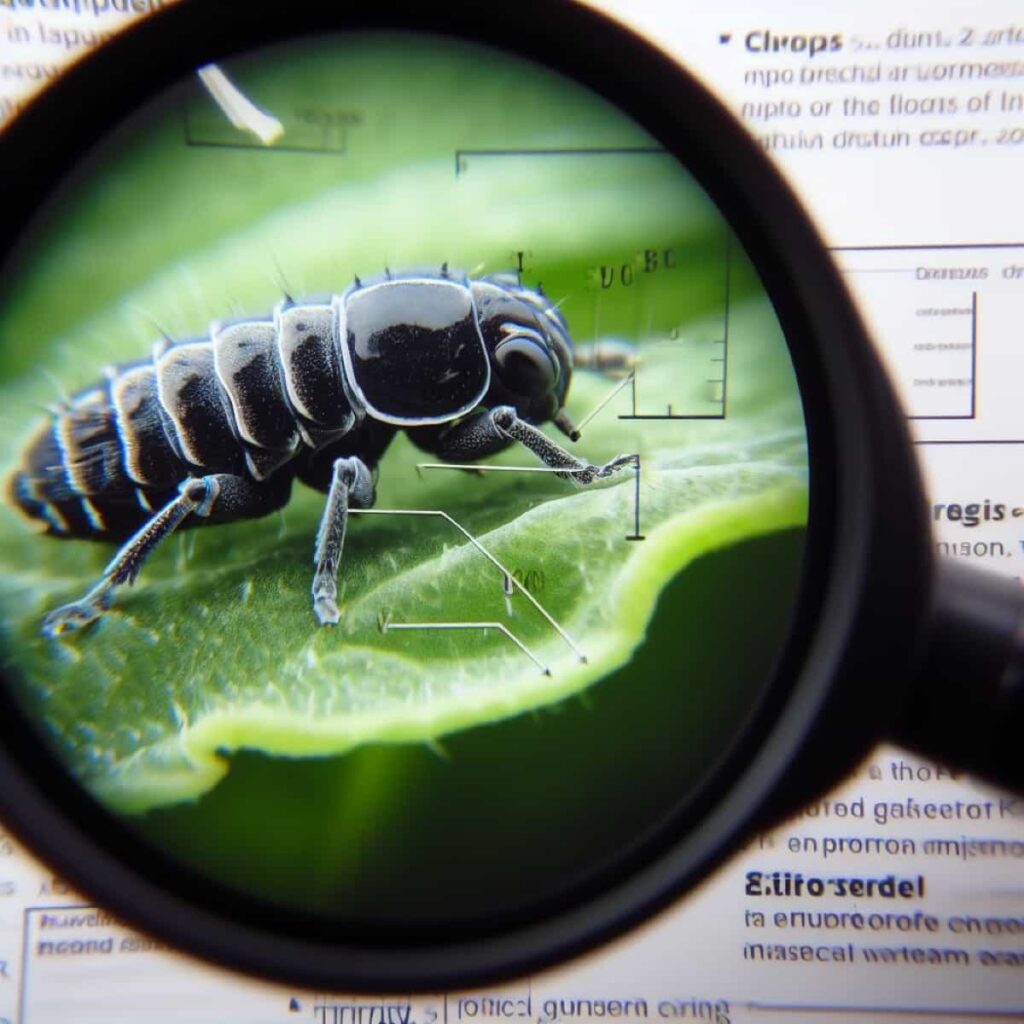
Management Strategies for Controlling Black Thrips Life Cycle
Black thrips control requires an integrated pest management (IPM) approach that combines cultural, physical, biological, and chemical methods. The following are some of the management strategies for controlling the black thrips life cycle:
- Cultural Methods: These methods involve modifying the crop environment or practices to reduce the suitability or attractiveness of the host plants for black thrips. Some of the cultural methods are:
- Crop rotation: This involves planting non-host crops such as cereals, legumes, or oilseeds in between solanaceous crops to break the life cycle of black thrips and reduce their population buildup.
- Resistant varieties: This involves planting chili varieties that are resistant or tolerant to black thrips or the viruses they transmit. Some of the resistant varieties are Pusa Jwala, Pusa Sadabahar, Pant C-1, etc.
- Sanitation: This involves removing and destroying infected plant debris, weeds, and volunteer plants that can harbor black thrips or the viruses they transmit.
- Trap crops: This involves planting crops that are more attractive to black thrips than the main crop, such as marigold, sunflower, or mustard. These crops can lure black thrips away from the main crop and reduce their damage potential.
- Intercropping: This involves planting crops that can repel or deter black thrips from the main crop, such as garlic, onion, coriander, or basil. These crops can produce volatile compounds that can mask the odor of the main crop or interfere with the feeding or oviposition behavior of black thrips.
Physical Methods for Controlling Black Thrips Life Cycle
Physical Methods: These methods involve using physical barriers or devices to prevent or reduce the entry or movement of black thrips into the crop area.
- Sticky traps: These are yellow or blue colored cards coated with a sticky substance that can trap and kill black thrips. These traps can be placed near the crop rows or at the borders of the field to monitor and reduce the black thrips population.
- Insect screens: These are fine mesh nets that can cover the crop area and exclude black thrips from entering or escaping. These screens can be used in greenhouses or nurseries to protect young plants from black thrips infestation.
- Reflective mulches: These are shiny materials such as aluminum foil or plastic sheets that can reflect sunlight and create an unfavorable environment for black thrips. These mulches can be spread on the soil surface around the crop plants to repel or confuse black thrips.
Biological Methods for Controlling Black Thrips Life Cycle
Biological Methods: These methods involve using natural enemies such as predators, parasitoids, or pathogens to control the black thrips population.
- Predators: These are insects that feed on black thrips at different stages of their life cycle. Some of the common predators are ladybugs, lacewings, pirate bugs, predatory mites, etc.
- Parasitoids: These are insects that lay their eggs inside or on black thrips larvae or pupae, killing them in the process. Some of the common parasitoids are wasps such as Ceranisus menes and Thripobius semiluteus.
- Pathogens: These are microorganisms such as fungi, bacteria, or viruses that can infect and kill black thrips. Some of the common pathogens are Beauveria bassiana, Metarhizium anisopliae, Bacillus thuringiensis var. kurstaki, etc.
In case you missed it: Best Natural Garden Pest Repellents: Homemade Organic and Natural Garden Pest Control Recipe
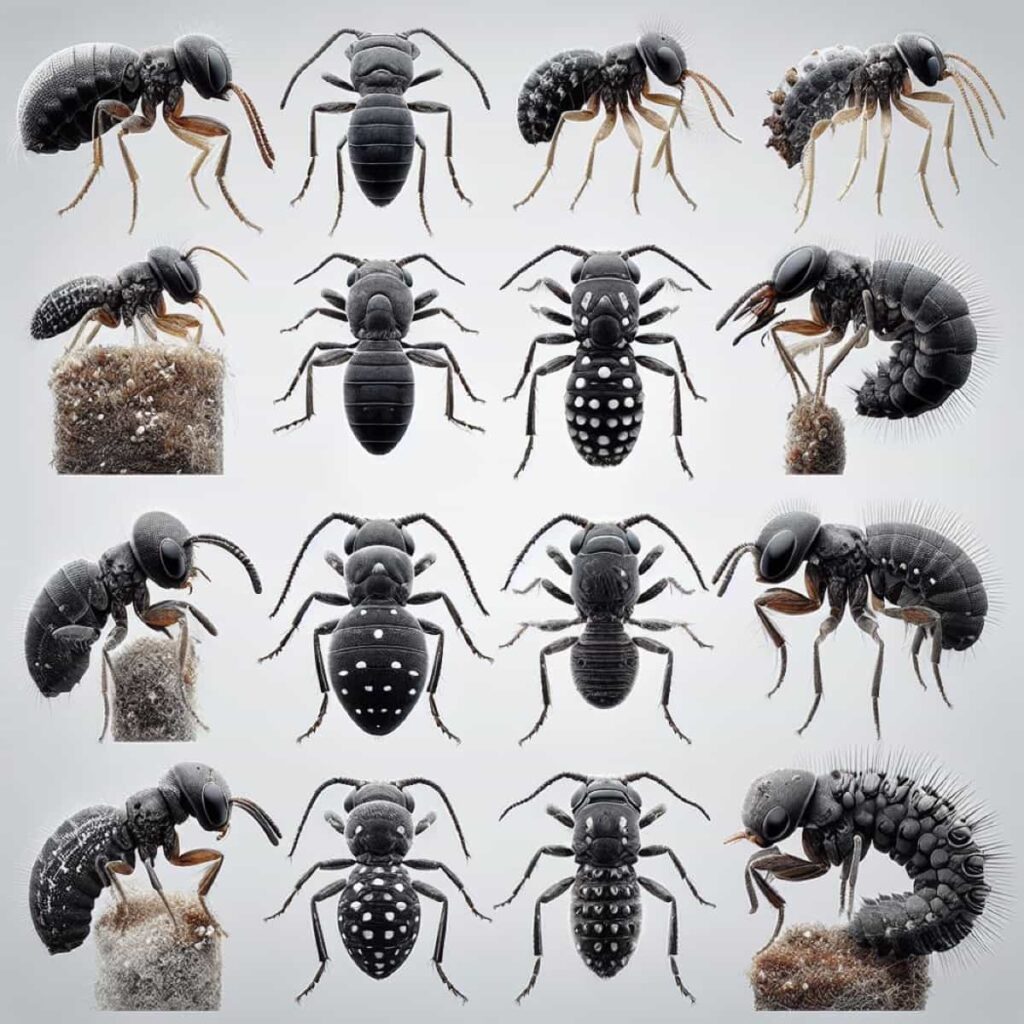
Chemical Methods for Controlling Black Thrips Life Cycle
Chemical Methods: These methods involve using synthetic or natural insecticides to kill black thrips. Chemical control should be used as a last resort when other methods fail or are not feasible.
- Synthetic insecticides: These are chemicals that can kill black thrips by contact or ingestion. Some of the common synthetic insecticides are acephate, imidacloprid, spinosad, abamectin, etc.
- Natural insecticides: These are chemicals derived from plants or animals that can kill black thrips by contact or ingestion. Some of the common natural insecticides are neem oil, pyrethrum extract, garlic extract, etc.
List of Chemicals for Black Thrip Control
| Alanto | 2 ml/L |
| Osheen | 0.4 gm/L |
| Benevia | 2 ml/L |
| Keefun | 1.5-2 ml/L |
| Delegate | 0.9 ml/L |
| Largo | 0.9 ml/L |
| Jump | 0.3 gm/L |
| Regent | 1.5-2 ml/L |
| Pegasus | 1 gm/L |
| Danitol | 2 ml/L |
| Gracia | 1 ml/L or 160 ml/acre |
| Exponus | 34 ml/acre |
| EM1 | 0.4 gm/L or 80 gm/acre |
In case you missed it: Different Types of Agriculture Subsidy In India: List of Farming Subsidy Schemes by Government of India
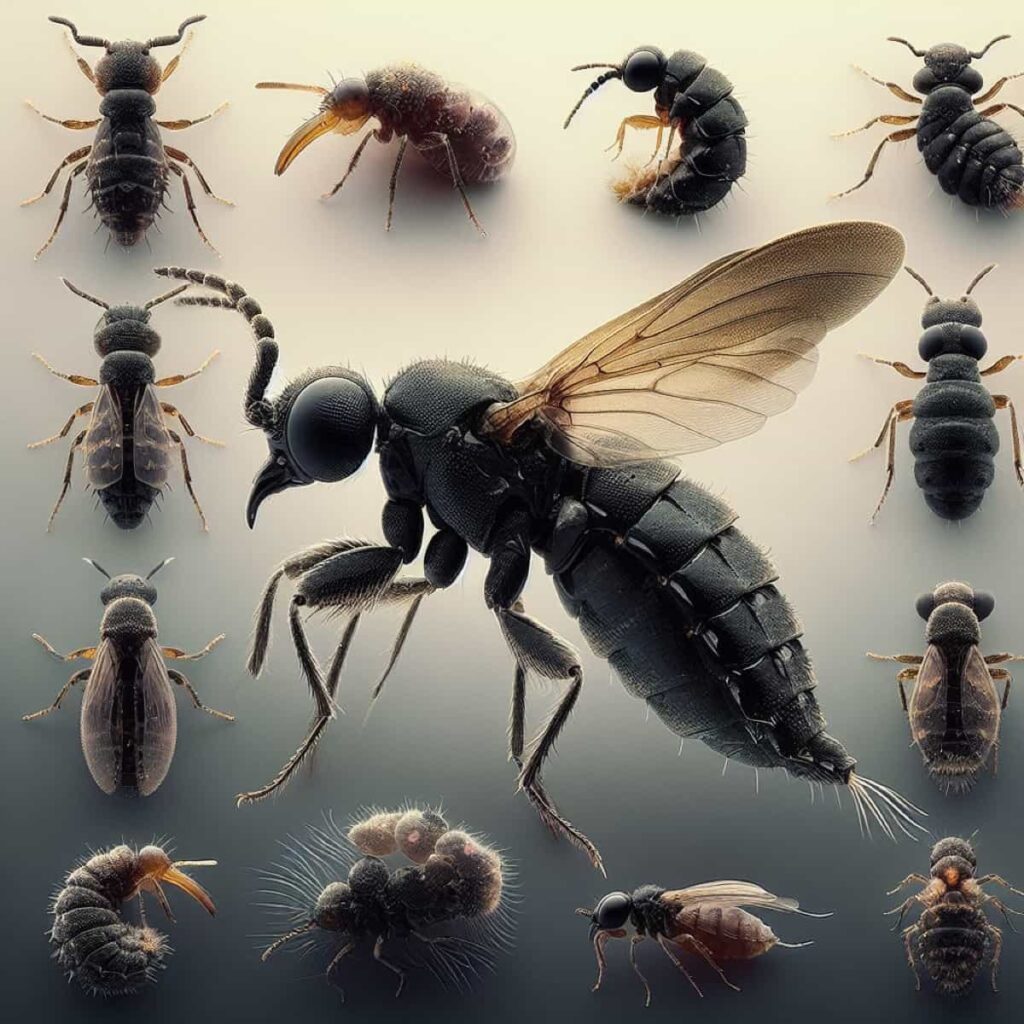
Conclusion
Effective management of black thrips involves a combination of preventive measures, such as intercropping and using sticky traps, alongside careful chemical control when necessary. Integrating these strategies can significantly reduce thrip populations, protecting chili crops from damage and ensuring healthier yields. Sustainable and vigilant pest management is key to combating the threat posed by black thrips.
- Profitable Village Farming Business Ideas in 2024
- High-Yield Aquaculture: Fast-Growing Fish for Farming
- Effective Fish Pond Construction Techniques for Beginners
- Irrigation and Water Management in Pineapple Farming
- Blossom to Harvest: Mastering Flowering and Pollination in Papaya Farming
- Pig Fattening Essentials: From Selection to Sale for Beginners
- Raising Wagyu Cattle: A Complete Guide for Premium Beef Production
- Soil Types and Their Water Holding Capacity
- Optimizing Irrigation Schedules for Coconut Groves for Enhanced Yield
- Espresso Your Garden: Coffee Grounds for Healthier Acid-Loving Plants
- The Best Soil Mix for Snake Plants: How to Mix Your Own Snake Plant Soil
- Green Thumb Success: Expert Tips for Cultivating Greenhouse Beans All Year Round
- Bloom All Year Round: The Ultimate Guide to Indoor Hyacinth Care
- Eco-Friendly Gardening: How to Make Liquid Fertilizer from Kitchen Waste
- Ultimate Guide to Grow Anise in Pots: Explore Seed Propagation to Harvesting
- Guide to Raising Chester White Pigs: Discover Breed Facts to Growth Management
- Mastering the Elegance: The Ultimate Guide to Weeping Cherry Tree Care, Planting, and Maintenance
- Ultimate Guide to Planting Garlic in Grow Bags: Growing Strategies for Beginners
- How to Fix Spider Plant Leaf-Related Problems: Natural and Organic Remedies
- 10 Reasons Why Your Tulsi Plant is Shedding Leaves: Home Remedies and Solutions
- Optimizing Growth and Yield: The Advantages of Palm Bunch Ash Fertilizer
- Utilizing Neem Oil Extract as a Natural Pesticide for Hydrangea
- From Soil to Harvest: Various Ways in Which Farmers Can Use AI Tools
- Steps to Encourage and Induce Citrus Flowers: A Comprehensive Guide
- How to Fix Snake Plant Leaf-Related Issues: Natural and Organic Remedies
- Transform Your Garden into a Fragrant Oasis with Raat Ki Rani (Night Blooming Jasmine)
- Discover the Ideal Chicken Breeds for Philippine Farms
- How to Create a Poultry Egg Farm Business Plan for Profits
- Grow Lemon Cucumbers Like a Pro: Insider Techniques for Bountiful Yields
- Ultimate Guide to Caring for Your Pink Princess Philodendron: Tips for Thriving Variegation
- Areca Nut Profit Per Acre: Calculating Yield and Cost of Cultivation
- How Kaveri Chicken is Becoming a More Profitable Breed in Indian Backyards
- Transform Your Barn: 9 Steps to Convert a Horse Stall into a Chicken Coop
- Exploring Suffolk Sheep Disadvantages with Limitations and Challenges
- Guide to Solving Potted Lemon Tree Problems: How to Revive Lemon Tree in Containers
- Steps to Encourage Female Pumpkin Flowers: Best Strategies for More Flowers and High Yields
